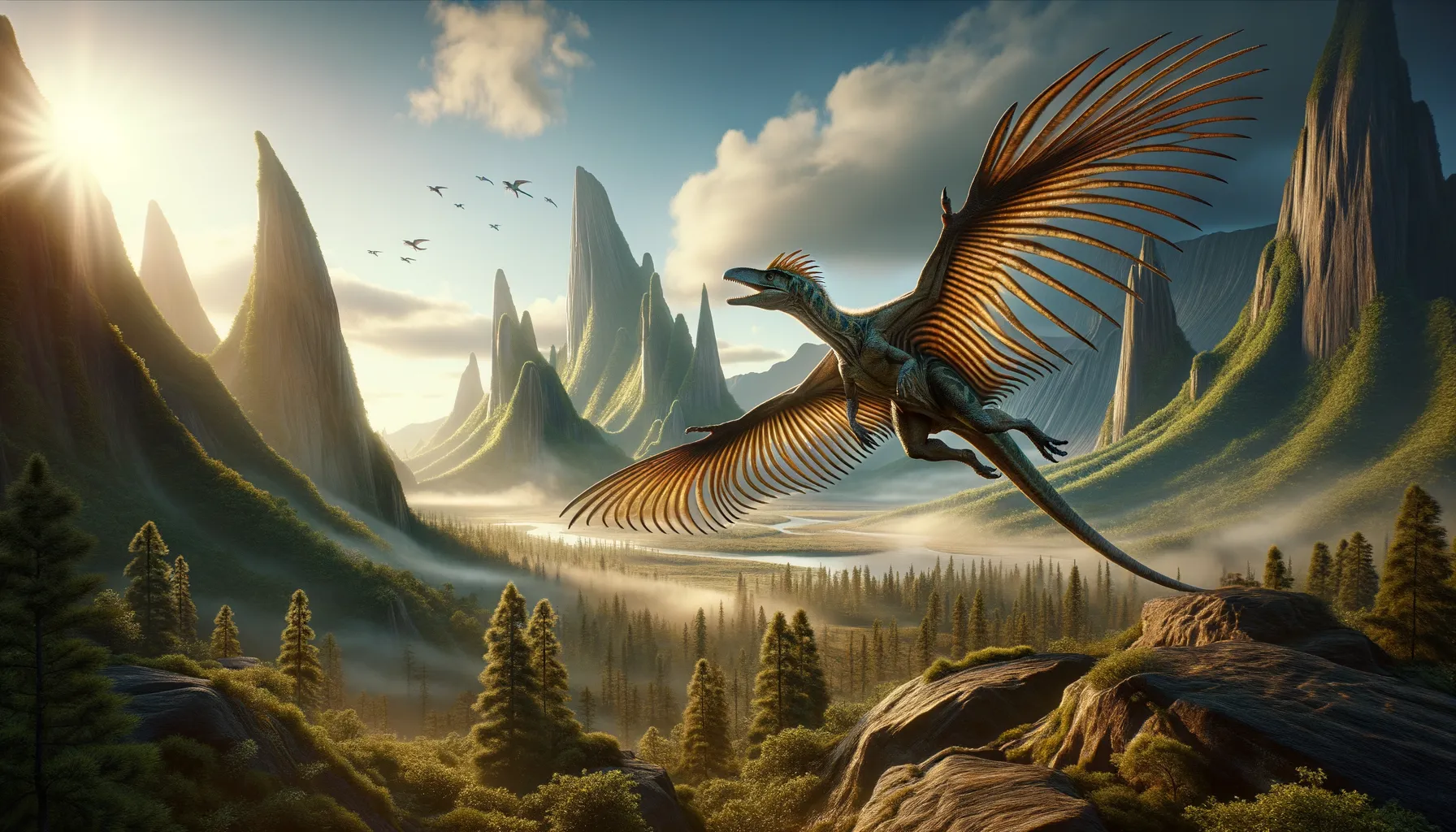
Coelurosauravus
Ancient glider of the Permian skies!
Period
Permian
Length
Approximately 40 cm in total length.
Height
Around 10 cm tall.
Weight
Very lightweight, due to gliding adaptations.
Coelurosauravus was an unusual prehistoric creature that glided through the air using wing-like structures formed by elongated ribs. Living during the Permian period, it was one of the earliest known vertebrates to exhibit flight-like abilities. Its lightweight body and distinctive physical adaptations enabled it to navigate its forested habitat effectively. Often found in regions of Europe, Coelurosauravus provides insight into the evolution of flight in vertebrates.
Diet
Coelurosauravus likely fed on small insects, utilizing its agile gliding abilities to capture prey. Its diet may have included a variety of arthropods available in its forested environments.
Hunting
As a glider rather than a fast-moving predator, Coelurosauravus would have relied on surprise and stealth to catch its prey. It probably used its wings to silently travel from tree to tree, picking off unsuspecting insects.
Environmental challenges
Living during the Permian period, Coelurosauravus faced challenges such as varying climates and the competition for food resources. As one of the earlier flying vertebrates, it had to adapt to both predators and environmental changes. Its survival depended on its ability to efficiently glide and forage within its habitat.
Speed
Relatively slow glider with limited mobility.
Lifespan
Could live for several years.
First discovery
Discovered in the early 20th century in Germany.
Fun Facts
- Coelurosauravus lived around 250 million years ago during the Late Permian period, which is even before the age of dinosaurs.
- This creature wasn't a dinosaur but technically more like a distant relative of lizards and snakes.
- Coelurosauravus is famous for its unique 'wings', which were actually skin membranes supported by elongated ribs, allowing it to glide between trees.
- Despite its gliding ability, Coelurosauravus was only about as long as a house cat and likely weighed less than a kilogram.
- Fossils of Coelurosauravus have been found in Germany and Madagascar, showing how widespread these creatures once were.
- With its impressive gliding skills, Coelurosauravus is one of the earliest known vertebrates to have developed the ability to glide.
- Its name, Coelurosauravus, translates to 'hollow lizard grandfather', which reflects its ancient lineage.
Growth and Development
Coelurosauravus likely had a rapid growth phase early in life to quickly reach gliding capabilities. This swift development was essential for avoiding ground predators and successfully navigating its aerial environment. Over time, its specialized ribs extended to form gliding surfaces, a unique adaptation in vertebrate development.
Habitat
Coelurosauravus inhabited forested regions, which provided ample opportunities for its gliding lifestyle. The canopy offered rich insect resources and safety from land-based predators. Its environment would have consisted of dense foliage and varied terrain, ideal for practicing its unique means of locomotion.
Interaction with other species
Coelurosauravus likely interacted with various forest-dwelling species, both as predator and prey. While it hunted small insects, it would have had to avoid larger land predators. Its gliding ability may have also allowed it to cover larger areas in search of food, across different habitat zones.
Natural lifespan
Likely endured several seasons, living for multiple years.
Reproduction
Reproduction for Coelurosauravus likely involved laying eggs, with nesting sites possibly hidden in the foliage. Its reproductive strategy would have focused on ensuring offspring reached gliding age quickly. Egg-laying would have been adapted to its arboreal lifestyle.
Social behaviour
Coelurosauravus might have been solitary or formed small groups for foraging. Without complex social structures, interactions would focus on reproduction and territorial activities. Gliding may have allowed them to maintain distance from others when necessary.
Fossil locations
Fossils of Coelurosauravus have primarily been discovered in Germany, providing key insights into its structure and lifestyle. These fossils are crucial for understanding the early evolution of gliding in vertebrates. Their discovery helps piece together the ecological dynamics of the time.
